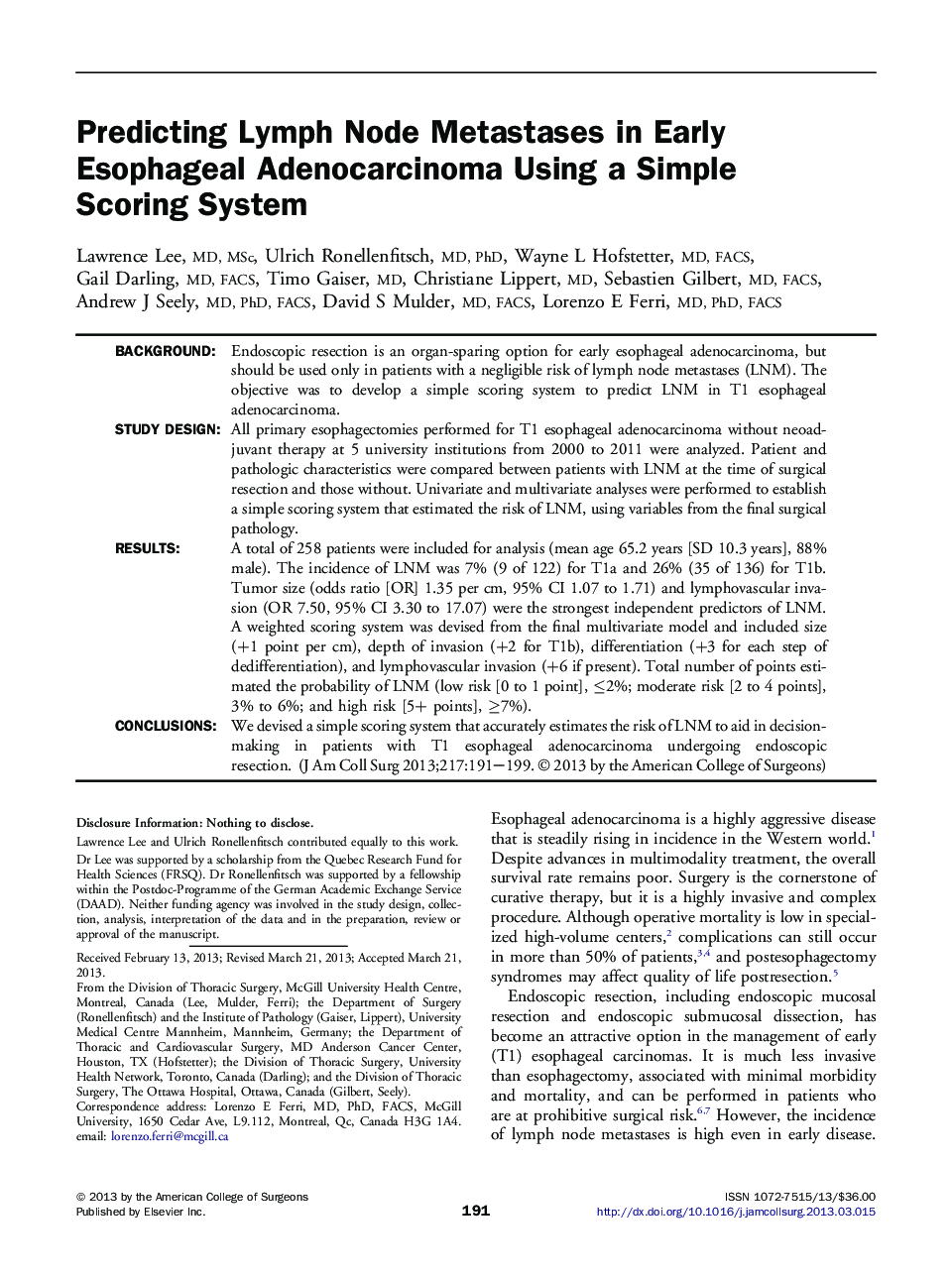| Article ID | Journal | Published Year | Pages | File Type |
|---|---|---|---|---|
| 4291822 | Journal of the American College of Surgeons | 2013 | 9 Pages |
BackgroundEndoscopic resection is an organ-sparing option for early esophageal adenocarcinoma, but should be used only in patients with a negligible risk of lymph node metastases (LNM). The objective was to develop a simple scoring system to predict LNM in T1 esophageal adenocarcinoma.Study DesignAll primary esophagectomies performed for T1 esophageal adenocarcinoma without neoadjuvant therapy at 5 university institutions from 2000 to 2011 were analyzed. Patient and pathologic characteristics were compared between patients with LNM at the time of surgical resection and those without. Univariate and multivariate analyses were performed to establish a simple scoring system that estimated the risk of LNM, using variables from the final surgical pathology.ResultsA total of 258 patients were included for analysis (mean age 65.2 years [SD 10.3 years], 88% male). The incidence of LNM was 7% (9 of 122) for T1a and 26% (35 of 136) for T1b. Tumor size (odds ratio [OR] 1.35 per cm, 95% CI 1.07 to 1.71) and lymphovascular invasion (OR 7.50, 95% CI 3.30 to 17.07) were the strongest independent predictors of LNM. A weighted scoring system was devised from the final multivariate model and included size (+1 point per cm), depth of invasion (+2 for T1b), differentiation (+3 for each step of dedifferentiation), and lymphovascular invasion (+6 if present). Total number of points estimated the probability of LNM (low risk [0 to 1 point], ≤2%; moderate risk [2 to 4 points], 3% to 6%; and high risk [5+ points], ≥7%).ConclusionsWe devised a simple scoring system that accurately estimates the risk of LNM to aid in decision-making in patients with T1 esophageal adenocarcinoma undergoing endoscopic resection.
